Reading Australia: 'Journey to the Stone Country' by Alex Miller
There is no recommended apprenticeship for writers. Nor are there any prescribed personal or professional qualifications. Hermits, obsessives, insurance clerks, customs officers, women who embroider, men who write letters, public servants, soldiers, drunks, provincial doctors and gulag inmates have all become great writers. How? A mystery. But avidity – about the world and the people in it – helps. So does a sharp eye, a tuned ear, and hands acquainted with work.
When seventeen-year-old Alex Miller migrated alone from his native England to make a life for himself in Australia, he already knew how to shoe a horse, muck out a stable, hunt stag, and survive – even thrive – in an English west-country world where class and ingrained social distinctions might have defined – or confined – him.
Half a century later, in 2003, the one-time Somerset farm labourer won Australia’s highest literary accolade, the Miles Franklin Literary Award, for his novel Journey to the Stone Country. He had won the Miles Franklin once before, in 1993, for The Ancestor Game, his searching Chinese/Australian novel about homeland and exile. And in all of the years before and between, Alex Miller had been taking note of the world around him. As a child in England, as a stockman in Queensland, horse-breaker in New Zealand, storyteller, university graduate in English and History, teacher of writing, drama entrepreneur (he co-founded the Anthill Theatre and was involved in the Melbourne Writers’ Theatre), he had been absorbing detail, salting it away. ‘There is a sacredness about detail,’ he says. ‘For example – and the examples are what matter – at a certain time of the morning, when the dew is still about, if you kick the earth there will be a particular smell.’
Miller’s novels honour that ‘sacredness about detail’. Their smells are specific and linked to memory; their landscapes gleam with angles of light that have ‘heft’, as poet Emily Dickinson, put it. Their texture is both physical and psychological, as here, in a lyrical passage from Journey to the Stone Country:
They ascended the incline of the ridge through a tract of country where prehistoric grasstrees and cycads stood in isolation among bloodwoods and stunted hickory, petrified sentinels from the age before man, their shaggy topknots and skirts trembling in the mountain breeze as if they would flee at the sight of the oncoming vehicles.
 Journey to the Stone Country (Allen & Unwin first edition, 2002)
Journey to the Stone Country (Allen & Unwin first edition, 2002)
Buy this bookThe two principal characters of Journey to the Stone Country, Bo Rennie and Annabelle Beck, are driving into the Queensland hinterland as if into an initiation, a discovery, or perhaps a recovery. (Officially they are engaged in a survey of cultural artefacts in country slated for mining or flooding). The land registers their approach: it shivers with apprehension. Miller says (in his publisher Allen & Unwin’s website notes) that there are in fact three main characters in the book: Bo, Annabelle, and Landscape.
‘Description’ is not the apt term for what Miller is doing in the Stone Country passage, or indeed in any of his eleven novels. His landscapes are always freighted with meaning. Indelible, they fix visual impressions for the reader and at the same time prompt questions, much in the way the great Quattrocento painter Masaccio fixes his unforgettable faces in an Italian landscape but all the while spurs you to ask about human motivation, human emotion. Who are we? Where are we? Why do we humans do what we do? What makes us tick? Renaissance questions. Universal questions. Questions Alex Miller explores, habitually and instinctively, in all his fiction.
Sometimes Miller’s landscapes are interior. In The Ancestor Game, his narrator, puzzling over distinctions between self-sufficiency and isolation, reveals the following:
Since my earliest childhood recollections I’d believed that if I could only reach deeply enough inside myself, one day I’d come upon extensive and complex landscapes rich with meaning and mystery, waiting for me to explore them.
It is not by chance that the cover to the 1992 edition of The Ancestor Game carries an urban landscape by Australian artist (and Miller’s friend) Rick Amor, master of the haunted scene, the metaphysical enquiry. In the painting a man – small, seemingly incidental – is climbing up a ladder into a dark, rectangular opening, his face obscured. What will he find? Will his world open out or be blocked? Is he escaping or questing? It is the kind of conundrum Miller’s novels confront.
‘Who are we? Where are we? Why do we humans do what we do? What makes us tick? Renaissance questions. Universal questions’
So, if landscape is the third main character in Journey to the Stone Country (and in all his novels), it has external and internal dimensions. It has evocative power – you can see every blade of buffel grass, smell the drought-breaking rain coming – and centripetal force: it draws you deep into the world of Miller’s imagining, to his creative centre, the place where his ideas foment and questions germinate. Questions that probe every aspect of our shared humanity, questions that transcend race, nationality, and tribe.
Stone Country was written over eighteen months, and in three drafts – a relaxed pace for Miller, who has sometimes spent years (seven for The Ancestor Game) on a novel, and at other times has finished one in a few hectic weeks. Autumn Laing (2011) was written under intense pressure (ten hours a day for five months). Coal Creek, his most recent novel (2013), written over ten weeks, ‘just flowed out’, Miller says. He had the voice, the lingo of Bobby Blue, the novel’s focal character ‘in his head’. It was language he had spoken himself as a lad, its rhythms and syntax easy on his tongue.
 Journey to the Stone Country (Sceptre UK edition, 2002)
Journey to the Stone Country (Sceptre UK edition, 2002)
Buy this bookMiller, whose mature baritone reflects his Scots-Irish parentage as well as a traveller’s lifetime of experience, listening, and study – in outback Australia, in France, Tunisia, Germany, China, in cities and country – has a mimic’s gift. He can do voices. Some of them have been his own. For Stone Country, with its blend of city talk and the dialectical inflections of stockmen and country people, indigenous and whitefella, his linguistic knack is crucial to the novel’s – and its characters’ – authenticity. He allows his people their full expressive range without patronising, without a hint of satire. Remember when English regional voices were considered uncouth? Now a Yorkshire or Geordie inflection has international cultural cachet. Miller’s characters don’t need fashion or trends: they speak authoritatively in a language that is their own, a language inviting to the ear.
Novelists are often coy about their sources, about the ‘real-life’ models for the characters in their books. Alex Miller is the opposite. He frankly acknowledges that he always draws from life – and then transfigures what he knows through the alchemy of fiction, so it becomes something else. Another order of truth. Journey to the Stone Country is dedicated to his wife, Stephanie, and also to his two friends, ‘the real Bo and Annabelle, whose story this is’.
‘The real Bo’ (you can easily find biographical details via Google if you think you need them) recognised a natural storyteller when he met one, and was too canny to let an opportunity slip. In the 1990s he told his mate Alex that one day he (Alex) would write a book about Bo’s Jangga country and its ‘Old People’. A few years later he invited Miller to come with him and his partner (‘the real Annabelle’) on a journey south from Townsville into the Bowen Basin and then further inland to the ranges, into his territory, the country of his Jangga ancestors.
Alex Miller says stories are gifted to him like this. It is as though they drop from the skies. But if they drop, it is into fertile ground. Autumn Laing’s story swooped on Miller in London’s Holland Park, where he’d been sitting on a bench, thinking about writing out the debt he owed to Sidney Nolan, whose photographs of Australia’s north had galvanised his migration to Australia. The novel’s seedbed is Miller’s felt obligation to Nolan and his familiarity with members of Melbourne’s Heide circle, including the place’s chatelaine, Sunday Reed, who was the model for Autumn. But the story, and its mercurial heroine, rapidly outgrew their sources and assumed a vivid, independent life.
For Stone Country, Miller took ‘the real’ Bo and Annabelle’s story, and crafted it into a fiction about friendship, historical violence, family, love, loyalty, massacre, and vengeance, set in a landscape he already knew in his bones, having ridden it for years as an itinerant stockman, but which he would go on discovering the more he travelled with his friends, and the more he wrote. Characteristically, his completed tale ripples outwards from its poignant centre. The delicately erotic love story of Bo Rennie, Jangga man and ‘Queensland ringer’, and Annabelle Beck, the academic historian long distanced from her Queensland homeland and white colonial past, is the focus, the significant example (‘the examples are what matter’), the resonant detail in a larger Australian history of differences between blackfella and whitefella. Are those differences irreconcilable? The novel is subtle and complex, asking the question and embodying answers in its characters, some of them, like the vehement and implacable old Jangga woman, Panya, intent on prosecuting a race war ‘for another thousand years’. Others, like Bo and Annabelle, are drawn together by a force that seems to transcend history and suggests possibilities, once unimagined.
 Journey to the Stone Country (Allen & Unwin edition, 2003)
Journey to the Stone Country (Allen & Unwin edition, 2003)
Buy this bookBo and Annabelle both have forebears who murdered out of fear, racial malice, or in lethal payback. They also have family members who crossed racial divides, confounding cultural norms and expectations. Bo’s Scottish grandfather, Iain Rennie (after whom Bo is formally named), fell in love with a traditional Jangga woman, sought her mother’s permission, and married – in a reciprocated love match. Grandma Rennie, as Bo calls her, was a woman of powerful character and an invincible sense of her own and her family’s dignity. After Iain Rennie’s premature death (he is killed in a fall from his horse), she lives on as the undisputed mistress of her station property. When it is taken from her, late in her life, the dispossession is done by fraud, not by law. The task of its repossession falls to her grandson, Iain Ban Rennie – renamed Bo by this formidable woman.
The novel is as much about the way power is used – so often ruthlessly – by dominant individuals and groups as it is about racial difference. Its epigraph, from the Austrian modernist writer, Robert Musil is an intriguing choice: ‘A ruling caste always remains slightly barbaric.’ (Musil’s own novels were banned by the Nazis, and he died in 1942, in Switzerland, in exile with his Jewish wife). Miller is too morally intelligent, too tactful to draw facile comparisons between the Holocaust and Aboriginal dispossession, but the guilts that attach to past atrocities are part of the fabric of his work, notably in Landscape of Farewell (2007), which reintroduces the character of Dougald Gnapun, Bo’s companion from his wild stock-mustering days. Dougald also looms authoritatively over Stone Country – a bridge figure between the Old People and the next generation, the new life. It is his children, the beautiful Trace and her quiet, watchful brother Arner (the novel’s ‘silent witness’), who accompany Bo and Annabelle part way on their journey, like premonitions of the future.
Who is ‘the ruling caste’ in Journey to the Stone Country? Who are the barbarians? The power imbalance is implicit – whites dominated, at least in the recent past. Miller doesn’t write his indigenous characters as victims. Nor is he blind to the physical and social havoc caused by white presumptions of mastery and the alienation of Aboriginal lands. But his novel is also a register of change, and of the human and political complexities and ironies of twenty-first-century circumstances. When Bo, Annabelle, Trace, and Arner come to a temporary rest in the edenic Ranna valley, with its great derelict station homestead (the house where Bo’s grandmother was taken as a child to live with the white Bigges family), they enjoy some sunlit days of pastoral calm. But the Ranna valley is scheduled to be flooded, its splendour obliterated. The ‘real-life Ranna’ is also threatened. (Miller, who says he ‘loves to bring people and places out of the silence’, makes a rueful comparison between Tasmania’s famous Franklin and this little-known, botanically rich, and equally beautiful Queensland treasure.) But threatened by whom? In the novel, the Ranna dam scheme is promoted as vigorously by the Jangga entrepreneur Les Marra as by his whitefella colleagues and backers. Marra breaks the travellers’ peace when he descends into the valley like a malevolent mosquito, whirring down in a helicopter and asserting his presence ‘as if he were the chevalier of a masterful order visiting his presence upon an outlying fiefdom of his domain’. Details, examples again. If Stone Country is a political novel, its politics are inscribed in the particulars, in the lives and actions of its protagonists.
‘The power imbalance is implicit – whites dominated, at least in the recent past’
Stone Country also has an Odyssean aspect: for Bo, Annabelle and for Miller himself, it is a return journey – and we know how different, even unsettling familiar things can be when we meet them again with fresh eyes. Annabelle, raw, and in retreat from a failed marriage to a Melbourne English scholar, is rediscovering her country, but she is also learning that her analytical habits, her Western yen to seek explanations for everything, will not serve her new circumstances. Nor will they help her fathom what is happening to her, or understand the man with whom she is falling in love, a man who is articulate yet who rations speech, and who has been taught by his magisterial grandmother to leave some mysteries intact.
Miller writes women with uncanny insight. Detail again. ‘How can he know that?’ I often wonder. He must watch. With Bo (and Dougald Gnapun), he writes out of long experience and a personal understanding of solitariness. He is fluent in Bo’s gestural language, ‘his hand sweeping the country before them like a radar beacon’. Miller is at ease with silence and can read it. He tells a story of his audience with the Queen: at a certain point, without prompting, he stood up and departed, with decorum. ‘How on earth did you know when to leave’ asked the equerry. ‘There was a little pause, and I read it as a sign.’
‘If Stone Country is a political novel, its politics are inscribed in the particulars, in the lives and actions of its protagonists’
Miller says that we are ‘an image species’. It’ is an odd claim from an unashamed wordsmith, but life, especially a working life spent amongst Aboriginal friends – ‘most of the time we didn’t say much, but we communicated all the time’ – has honed his senses to razor sharpness, and given him an extraordinary expressive repertoire, a perceptiveness and instinct that comprehends silence and doesn’t fret or flail in the face of mystery. Creative humility, you might call it, plus a craftsman’s savvy, all in the one writer.
Journey to the Stone Country, like Landscape of Farewell, is a novel that comes out of a specific Queensland landscape, one peopled by characters who are marked by their country and culture – details again, the examples that matter. But there is nothing regional or confined about Miller’s imaginative or intellectual reach. His sixth novel, like the five that preceded and the five that follow it, takes on the world as he finds it in a particular place, and gives it back to us with such penetration, such creative zest. ‘Write what you love’, a wise friend once counselled him. So Miller does, in lyrical and incisive ways, creating a world we can wonder at, as Annabelle does here:
In the blue haze of distance to the northwest the valley of the Bowen River spread out below them, a broad pastureland where herds of white Brahman cattle grazed the sweet natural grasses of the uplands and fertile riverflats. To their northwest another country, intimidating and vast, the folded ranges of Salitros and the Massey Gorge, a forested wilderness without dwellings or roads, no smoke or sign of habitation across the wide and undulating landscape of iridescent hills that lay glittering in the morning sun below them. Bo’s indicating hand going out. ‘Ranna’s way over there.’
She looked and wondered at the beauty and mystery of her own country.
References
Dixon, Robert, ed. The Novels of Alex Miller: An Introduction, Allen & Unwin, 2012.
Dixon, Robert. Alex Miller: The Ruin of Time, Sydney University Press, 2014.
Walker, Brenda. ‘Alex Miller: The Ruin of Time', Australian Book Review, December 2014.
Stretton, Andrea. 'Journey to the Stone Country', Sydney Morning Herald, 16 November 2002.
Fraser, Morag. 'Lovesong', Sydney Morning Herald, December 2009.
Fraser, Morag. 'Alex Miller's indispensable new novel', Australian Book Review, October 2011.
Author conversation with Alex Miller, 14 April 2015. All quotations from Miller, unless otherwise acknowledged, are from this conversation.





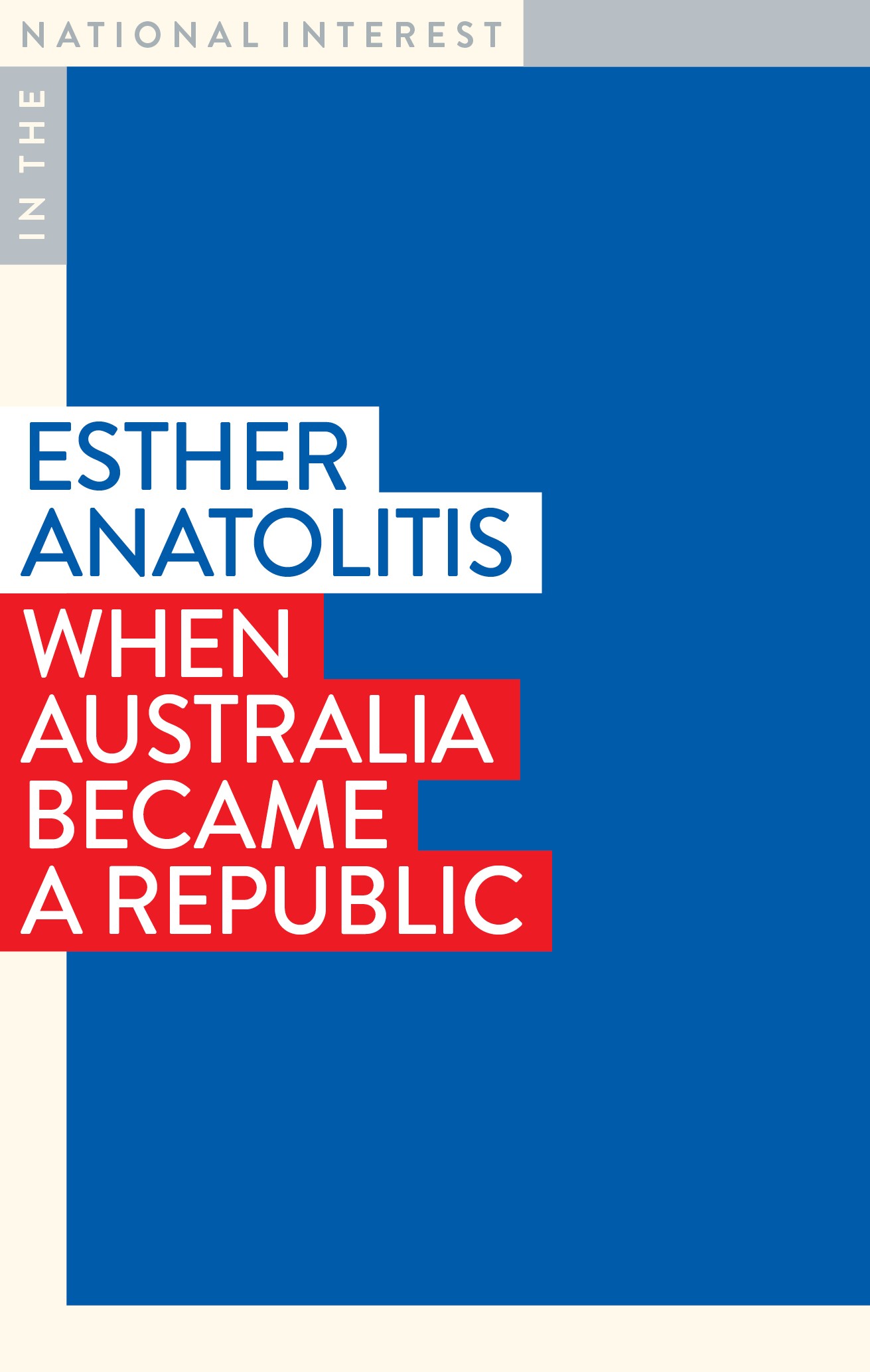
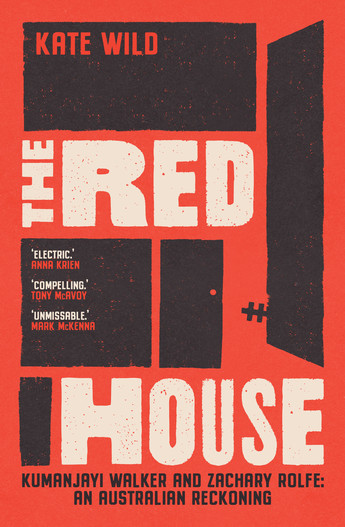
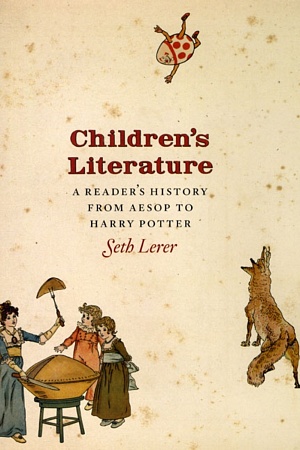
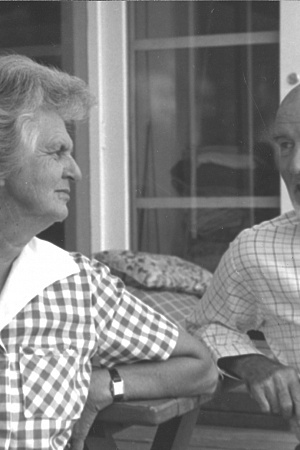
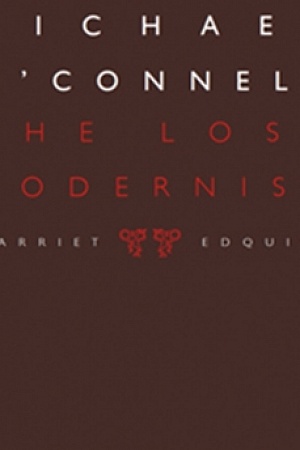
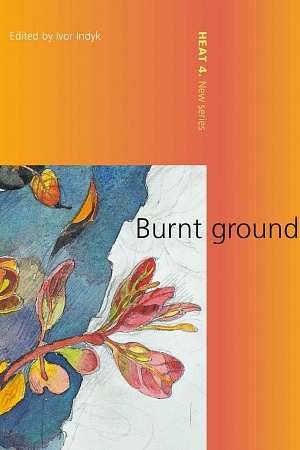
Comment (1)
Leave a comment
If you are an ABR subscriber, you will need to sign in to post a comment.
If you have forgotten your sign in details, or if you receive an error message when trying to submit your comment, please email your comment (and the name of the article to which it relates) to ABR Comments. We will review your comment and, subject to approval, we will post it under your name.
Please note that all comments must be approved by ABR and comply with our Terms & Conditions.